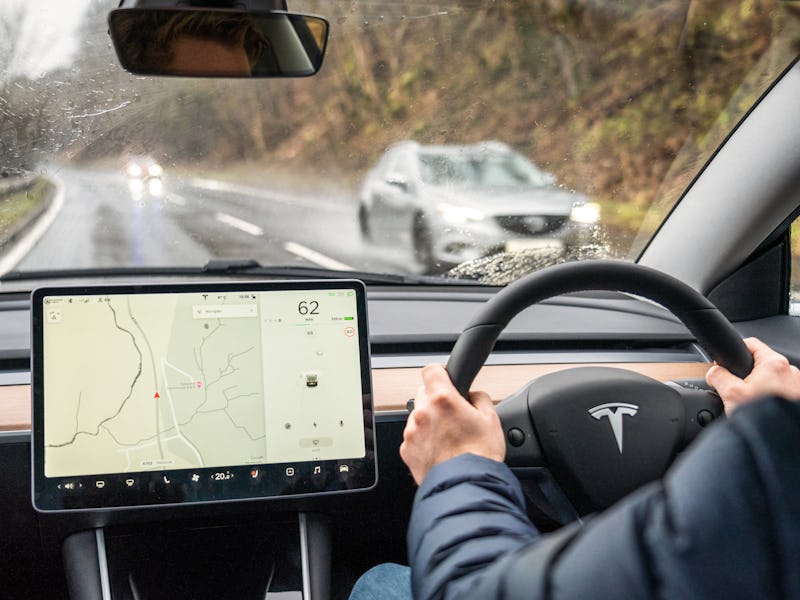Musk Reads: New Tesla features confirmed
The Plaid powertrain gets simplified and Model 3 parts help fight the coronavirus. Solar for low-income communities?

The Plaid powertrain gets simplified and Model 3 parts help fight the coronavirus. Solar for low-income communities? It’s Musk Reads: Tesla Edition #158.
A version of this article appeared in the “Musk Reads” newsletter. Sign up for free here.
Musk quote of the week
“We’re going to simplify Plaid a little. Was getting too complex.”
- Read more about Musk’s latest decision. The Plaid powertrain is expected to bring high speeds to the Model S, Model X, and second-generation Roadster at the end of this year. A prototype Model S with the new powertrain beat the Porsche Taycan by 19 seconds.
Tesla
Tesla’s full self-driving system could one day reach “superhuman” capabilities, Musk declared this week. The CEO explained that its system is operating with eight cameras and added sensors versus what is essentially two cameras with humans. The company has big plans for full autonomy but notably missed deadlines like a coast-to-coast autonomous drive by 2017 and an ambitious target to ship “feature complete” full autonomy by the end of 2019. Musk revealed on April 3 that the ability to detect traffic lights and stop signs will likely roll out in the United States in a few weeks before moving to a worldwide release in the third quarter. Full self-driving will “probably” increase in price on July 1. Read more.
In other Tesla features news:
- Musk gave the thumbs-up to a “stealth” Sentry Mode where the headlights don’t blink and the in-car display doesn’t activate.
- A wifi garage door opening icon for users without HomeLink is “coming soon.”
- The Tesla app will receive the ability to purchase basic Autopilot functionality. This feature will be targeted at long range, rear-wheel drive Tesla Model 3 owners.
Tesla solar
Tesla has tweaked the terms of its solar installs, Electrek reported this week. Its retrofit solar product, where consumers rent the panels by the month, was previously able to be removed for a fee of $1,500. This has now been tweaked to cost $2,500 in California and a more vague “competitive” price in other markets.
In other Musk news…
Tesla competitor Polestar unveiled its Precept concept car this week. The car won’t be for sale, but its design will influence future vehicles like the planned Polestar 3 premium sport utility vehicle. Polestar design director Max Missoni told Inverse the car shows “our vision for the future,” with design elements only possible in an electric vehicle like a SmartZone above the bumper. Read more.
The Tesla Model 3 found a surprise new use this week after some of its components were used to build a ventilator to treat coronavirus patients. The company’s video showed the in-car touchscreen used to show vital signs, while the internal computer is powered by the in-car infotainment system. Read more.
What’s next for Tesla: Tesla vehicles in the United States will receive the ability to detect traffic lights and stop signs in the next few weeks.
Musk Reads mailroom
Marcus Wigan writes:
Tesla Powerwall app shortfalls: I have one and it works fine BUT the app does not allow one to put in the kilowatt costs for leak off peak and of course the completely omitted feed-in tariff entry! It’s trivial to do, but without it one simply cannot set the Powerwall 2 to work optimally.
The best bet at this stage is to use the time-based controls to maximize battery usage when electricity is most expensive. The Balanced Mode strikes a mix between going off-grid and saving money, while the Cost Savings Mode sacrifices off-grid capabilities for savings. It’s a system that could indeed benefit from some work, though, as users in the Tesla subreddit have found the system can’t cope with more complex arrangements where the prices shift more erratically.
Tim Simpson writes:
Is there a way that you can give your panels away to low income apartments and homes? With battery backup. You could probably get reimbursed. Training new employees would definitely be great. Veterans would help.
Tesla has developed a similar project in South Australia. The state has fitted 50,000 homes with solar panels and batteries to create a “virtual power plant,” selling the electricity back to the community at a low price. The project started by fitting 1,100 households living in public housing with panels. In our April 2018 interview, presidential candidate Andrew Yang described how displaced workers could help install solar panels in the United States.
Got any comments or queries? Don’t forget to send them over to muskreads@inverse.com.
Video of the week
Sandy Munro performs one of his legendary dissections on the Tesla Model Y.
Got a photo or video you’d like to see featured? Send it over to muskreads@inverse.com!
The ultra-fine print
This has been Musk Reads: Tesla Edition #158, the weekly rundown of essential reading about futurist and entrepreneur Elon Musk. I’m Mike Brown, an innovation journalist for Inverse.
- Email me directly at mike.brown@inverse.com and follow me on Twitter @mikearildbrown.
- Follow Inverse on Twitter @inversedotcom.
- Got any comments or queries? Don’t forget to send them over to muskreads@inverse.com.
A version of this article appeared in the “Musk Reads” newsletter. Sign up for free here.